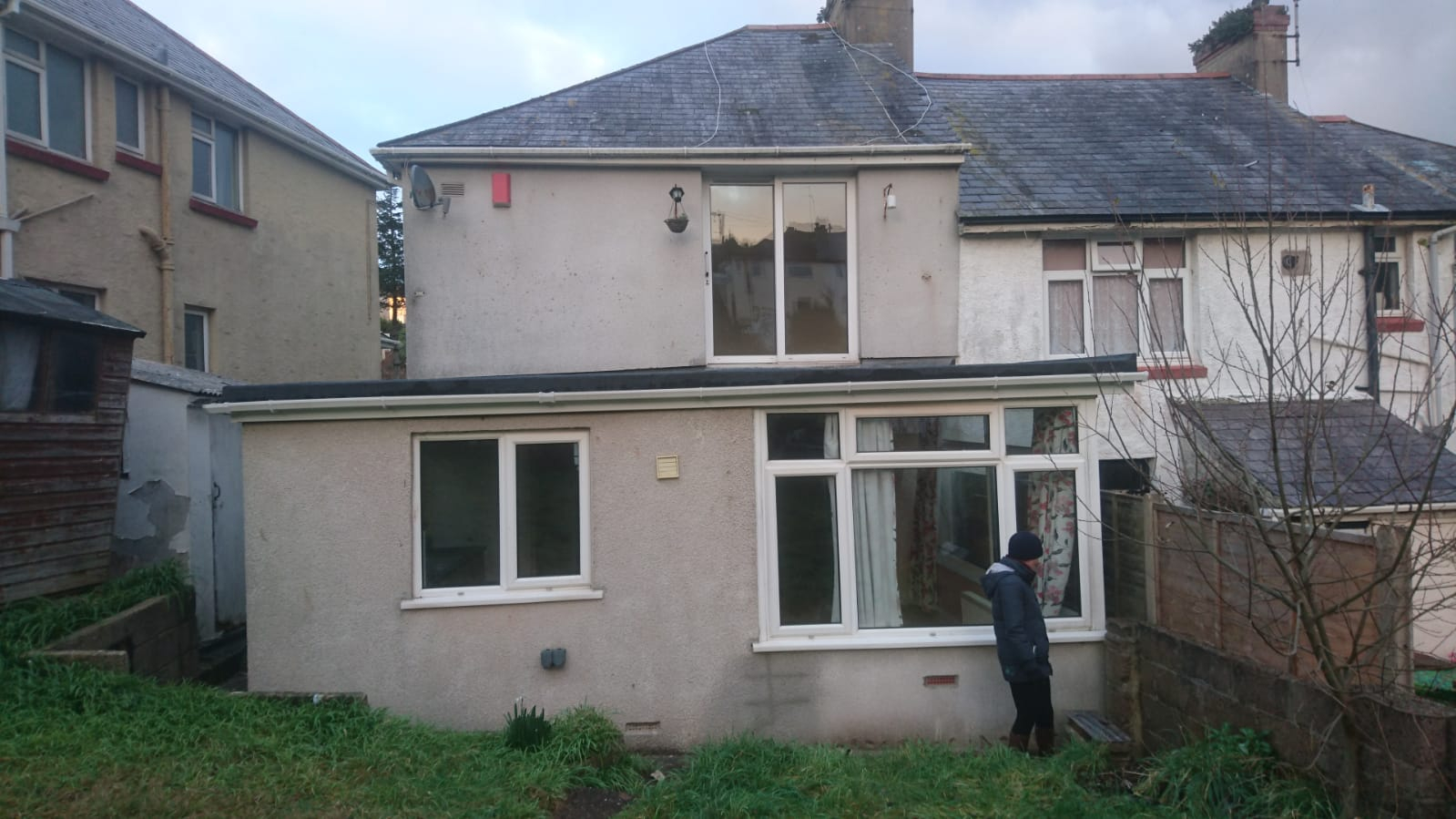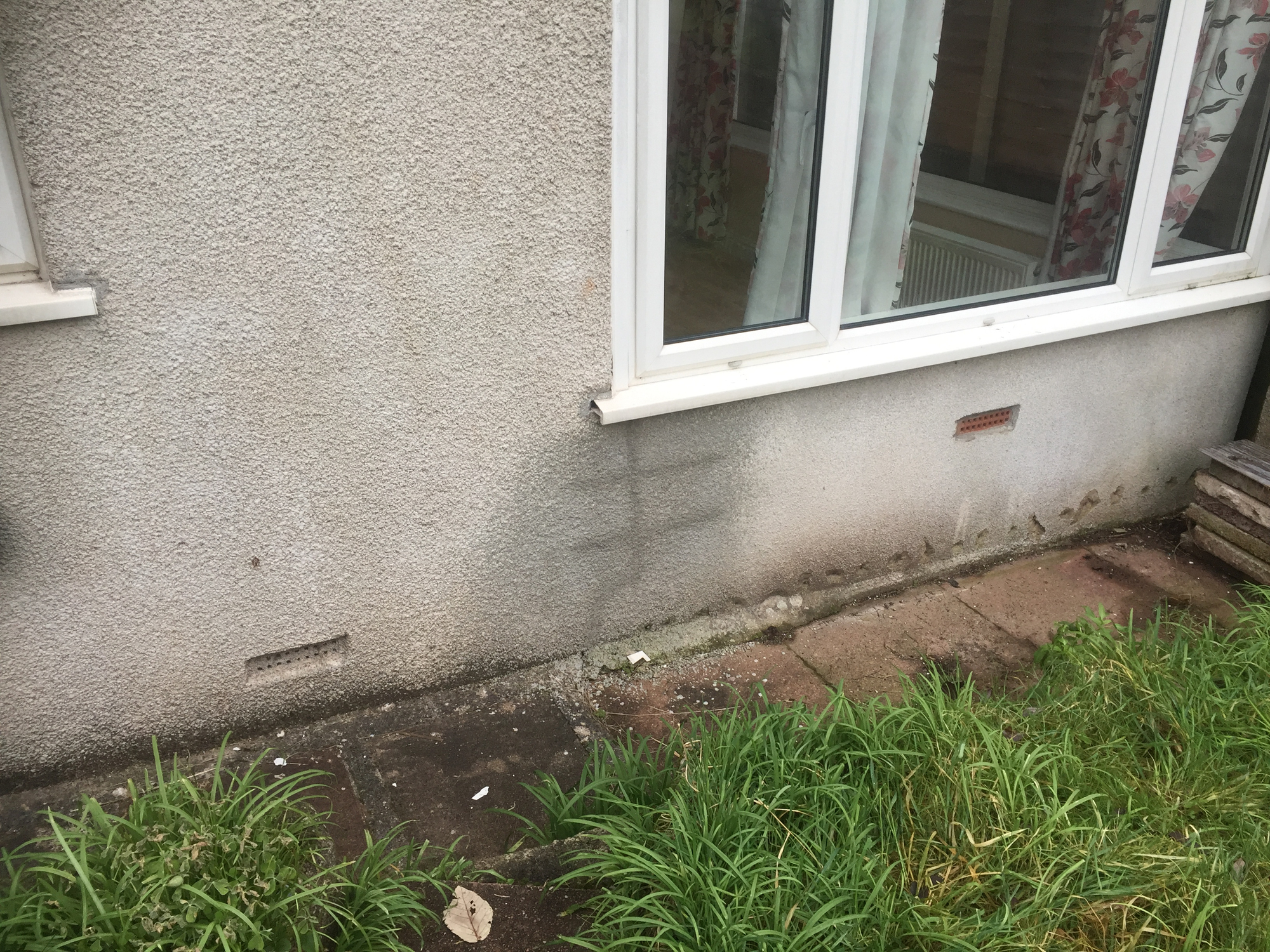We’d like to remind Forumites to please avoid political debate on the Forum.
This is to keep it a safe and useful space for MoneySaving discussions. Threads that are – or become – political in nature may be removed in line with the Forum’s rules. Thank you for your understanding.
Possible subsidence. How concerned should I be?

Hello,
I am in the midst of purchasing my first home. The property is a 1920s 3 bed semi detached.
The property was extended (single storey) at the back in the 1980s. The extension was built over a drain.
Directly under the left side of the window (on the outside) in the extension you can see where a crack stitch has been installed. We've had a builder out and he's advised us that based on this, he believes that the extension needs underpinning. There is also a very long but thin crack in the ceiling where the extension meets the main house.
Is the crack in the extension and the thin crack in the ceiling enough to suggest that subsidence has occurred? Or could it just as likely be something more harmless?
We’ve been advised by the seller (via solicitors) that the crack was repaired about 6 months ago, shortly before the house was placed on the market. An insurance claim was not made on this. According to the seller, her surveyor advised her that the crack needed repairing, but that no further work was required (e.g. underpinning). The seller apparently has no written record of this and does not know how/why the crack developed.
We’re looking at getting a
structural engineer out, but we’re not sure about paying out for this if
subsidence seems quite obvious…..
I'm aware that subsidence and underpinning can lead to various difficulties, particularly with insurance and reselling the property. Would underpinning in the extension alone lead to such problems, or would issues only arise if the main building needed underpinning?
What could it mean for us if we purchased a house with a crack in it, even if it hadn’t been officially recorded as subsidence?
Any advice really would be greatly appreciated.
Many thanks
Comments
-
Having suffered a subsidence (heave) insurance claim two years after moving into our home, I wouldn’t buy a house with signs of unresolved subsidence. That was nearly 30 years ago and everything is fine now, but it is in the house’s record.Our insurance claim was equivalent to around 50 years insurance premiums at the time and our extension now sits on a 30cm deep concrete raft supported by approximately 20 five meter deep concrete piles.
Your mortgage lender may not be happy to lend on a subsided property and you may have a challenge in getting insurance cover. Does your solicitor know about the possible subsidence? If not, tell them and take their advice.In the meantime, I suggest you also ask the vendor for a copy of any structural inspection reports pre and post any remedial works as an insurer is unlikely to cover existing subsidence.
If your mortgage lender is not happy to lend, or your insurer refuses cover on normal terms or your solicitor advises against proceeding, take their advice and look for another property.1 -
Can you post some photos?Gather ye rosebuds while ye may0
-
Don't take the builder's word for it. If you have concerns pay for a structural engineer to take a look. The automatic answer is not subsidence.2
-
Imposible to tell from your description. Pictures please. Close up of the relevant sections AND more distant pictures to show the context.Cracking could just be plasterwork drying out, or maybe the extension was not properly tied in to the main building.2
-
I'm a structural engineer and single storey extensions on houses of this age commonly rotate away from the original house. The ceiling crack could be explained by this, check where the extension walls meet the main house to see if there's a gap maybe bigger at the top than bottom, or a movement joint with sealant bead that's pulled away from the brickwork indicating movement or if the brickwork is toothed into the original house, if so check for signs of cracking here or repointing. Underpinning is a last resort and costly, I think your builder might like the work though, one crack at a window corner does not mean underpin the foundations! It's worthwhile getting a price for a structural engineer to do a visual inspection but don't pay over £500 and for that you want a visit and written report, keep in mind they wont be able to open anything up so the inspection is limited. There are things you can investigate first to put your mind at rest.
1. Check the postcode on the geology viewer on the bgs (british geological survey) website, you are looking for bedrock geology and superficial deposits, if clay is mentioned then subsidence could be possible.
2. Check for mature trees close to the house, or even signs of recently removed trees / stumps. Trees close to the walls where you have clay soils on site are a huge red flag.
Like others have said, photos would help a lot and an estimate of any crack widths, ie. Half a mm, 5mm etc. Cracks springing from window corners are common as these are weak spots in the structure. In 15 years of inspecting houses for structural movement I have never resorted to underpinning being needed, much more commonly it's a case of removing trees or repairing drains, as broken drains can wash out fine soil particles in non clay soils and cause subsidence in this way. Once the clay recovers cracks will close up and can be stitched with heli bars in the bed joints, which you may have an example of. From your description it sounds ok but you're spending a lot of money and need to be sure you know what you're buying.5 -
Is this property significantly cheaper than others? Otherwise, why bother?No reliance should be placed on the above! Absolutely none, do you hear?1
-
Hi everyone thanks for your help. Here are some pictures we took. The crack is in the middle of the extension and not where the house and extention connect. There are also some small holes along the bottom of the wall, which we noticed. Thank you for any help. (P.s I’m replying while my partner is at work)

 0
0 -
I'll leave structural comments to the more expert posters here, but whilst it won't affect the foundations,peeing up against the wall may not be the best idea!
1 -
I'm no structural engineer but the whole extension looks wonky.Those small holes look like the signs of an injected chemical damp proof course. Which would seemingly be pointless given the ground is an high as it. That is assuming chemical damp proofing actually works, but we don't need to get into that.1
-
The last picture seems to show a line of holes disappearing into the ground, what are they ? DPC injection?
Is the extension leaning or is that an illusion caused by camera angle?I am not a cat (But my friend is)0
Confirm your email address to Create Threads and Reply

Categories
- All Categories
- 351.9K Banking & Borrowing
- 253.5K Reduce Debt & Boost Income
- 454.1K Spending & Discounts
- 245K Work, Benefits & Business
- 600.5K Mortgages, Homes & Bills
- 177.4K Life & Family
- 258.7K Travel & Transport
- 1.5M Hobbies & Leisure
- 16.2K Discuss & Feedback
- 37.6K Read-Only Boards




